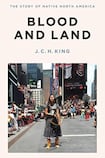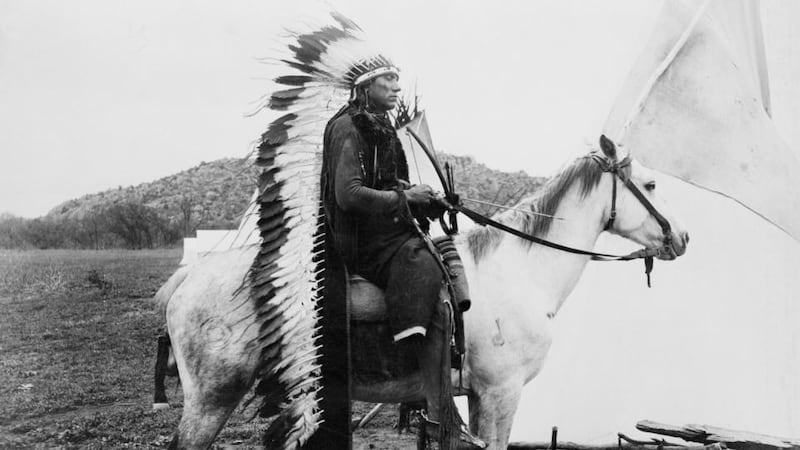
It was “virgin land”, it was “an errand into the wilderness”. Most venerably, it was “the frontier”. But in each of these formulations there was an absence: the millions (the very fact that while the order of magnitude was assumed but left uncalibrated is itself indicative) of Native Americans who were the shadowy but dangerous other forces obstructing, damaging but never ultimately preventing the inexorable advance of westward expansion.
In the last quarter of the 20th century, American historians at last woke up. In part inspired and in part provoked by the immense popularity of such professions of national guilt as Dee Brown's Bury My Heart at Wounded Knee and Ralph Nelson's movie Soldier Blue (both of which appeared in 1970), American historians began seriously and critically to address the role played by Native Americans, and by the interaction of Native Americans with European colonisers, in the shaping of American history.
The cumulative results of this long overdue initiative were in time to prove to be one of the most revolutionary changes in the writing of US history. But for many previous decades, the credit for the discovery, preservation and interpretation of Native American history was, with some few exceptions (Wilcomb Washburn must be acknowledged here), the achievement of philologists, geographers, and anthropologists – not historians.

JCH King's Blood and Land is a direct inheritor of this admirable tradition. Formerly Keeper of Anthropology, Oceania and the Americas at the British Museum, King writes in the tradition of the great anthropologists and ethnographers of the 19th and 20th centuries such as Lewis Morgan, Alfred Kroeber and Anthony Wallace.
Thus, despite the indication of the subtitle, this is not a conventional chronological story. Rather, it is a set of multiple stories organised on thematic lines, which transcend political demarcation and extend to all of North America, and even to Greenland and the Arctic Circle.
Cultural impulses
The book contains extended discussions on Native American attitudes toward nature (especially land and, even more especially, water), toward religion and magic, and how these underlying cultural impulses influenced the evolution of their language, speech and the composition of literature, their material culture and their creative art.
Resisting the tendency toward generalisation that is the inherent danger of thematic survey, King emphasises singularity, contrast and diversification. And this insistence is more fully elaborated in the four chapters that make up the last half of the book, supplying richly detailed accounts of Native American cultures within specified and geographically defined areas as the “East”, “West”, “North” and “Pacific North West Coast”.
Each chapter is compendious, crammed with a treasure of information, statistics, masterfully synthetic discussions and judiciously chosen anecdote. Some are strikingly revisionist, some arcane and some, such as the origin of Hollywood’s “Injun” language, both enlightening and wonderfully entertaining. And all of them are preceded by lavish and thoughtfully chosen illustrations which, far from being peripheral, add substantially to the value of the book.
Given the author’s area of expertise, it is not surprising that the chapter on art and material culture is especially valuable. For me, however, the early sections of the chapter on language and literature contain the most lucid and succinct discussion of the nature, origin and diversification of Native American languages – a subject central to the understanding of Native American history – that I have ever read.
Still, if variety, diversity and change are themes which King insists upon in the body of the book, his opening chapters are resolutely unifying. The story of the Native America is, he asserts, a story of “recovery” and “success”. The mass of statistical and other data he produces in support of this claim is impressive. But he also strikes an ambiguous note.
Gambling success
A great deal of the Native Americans’ recent economic and social success has been due to the extraordinary profitability of the gaming industry, which has had an output of more than $91 billion (€81 billion) and is responsible directly for nearly 612,000 jobs. But the industry is under dual threats from on-line gaming and increasing political concern about the deleterious social and psychological effects of gambling. King, ever the optimist, thinks it will survive, but that it must adapt. Maybe.
In its largely optimistic and positive tone, King’s survey differs significantly from the tragic, blood-soaked and sometimes sordid accounts that have since the 1970s frequently characterised conventional historical studies. And the manner in which he presents his historical (as distinct from anthropological or sociological) material in short bite-sized sections of a paragraph or two, scattered throughout the book, has the effect of diminishing the impact of the trauma and horrors of so many events in Native American history.
This may well be a healthy corrective to the many celebrations of victimisation in the tradition of Bury My Heart at Wounded Knee. But it comes at a cost.
First, the dispersal and fragmentation of the historical events makes it difficult for a reader relatively unfamiliar with the subject to grasp the main currents of Native American history.
Second it effectively obscures the powerful achievement of recent generations of historians who have, by combining the methods and perspectives of anthropology, archaeology and folklore with the practices of historical criticism, produced, most especially for the colonial and antebellum periods, the most thorough revision of the character of American history.
Radically altered
Painstakingly uncovering the many conflicting forces operating both within and between the Native and European American cultures, revealing the powerful ideological forces driving them toward war and extermination, but also recording the sundry contingencies and isolated events that unexpectedly provoked such brutal results, this reinterpretative achievement has radically altered our understanding of all the peoples of North America. And its neglect here has led to a far simpler account of that interaction than the evidence suggests.
Yet those who have been stimulated by this excellent panoramic survey to probe deeper into the powerful conflicting forces through which this tragic and complex encounter between radically different cultures was driven can hardly do better than google the names of authors such as James Axtell, Frederick Hoxie, Francis Jennings, Daniel Richter and Neal Salisbury.
Ciaran Brady is professor of early modern history and historiography at Trinity College Dublin. His latest book is ‘Shane O’Neill’ (2nd ed, UCD Press, 2015).










